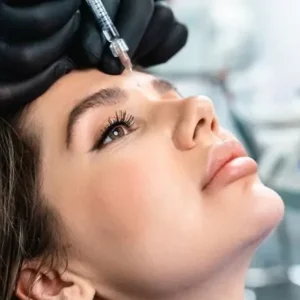Botox and Beyond | Emerging Trends in Non-Surgical Aesthetics
Introduction to Non-Surgical Aesthetics
Botox and Beyond, in recent years, the field of aesthetic medicine has witnessed a significant shift towards non-surgical procedures. Patients are increasingly seeking minimally invasive treatments to enhance their appearance without the downtime and risks associated with traditional surgery. This trend has led to the emergence of innovative techniques and technologies aimed at achieving natural-looking results with minimal discomfort.
Evolution of Botox
Botox, short for botulinum toxin, has long been a cornerstone of non-surgical aesthetics. Originally used to treat medical conditions such as muscle spasms, its cosmetic benefits were discovered serendipitously. Since gaining FDA approval for cosmetic use in 2002, Botox treatment injections have become one of the most popular cosmetic procedures worldwide, effectively reducing the appearance of wrinkles and fine lines.

Beyond Botox: Emerging Trends
While Botox remains a popular choice for wrinkle reduction, the field of non-surgical aesthetics has expanded to include a variety of other treatments. Dermal fillers, for example, are used to add volume to the face, plump lips, and fill in deep creases. Advanced techniques such as micro-needling and laser therapy are also gaining traction for their ability to improve skin texture and tone.
The Rise of Non-Surgical Body Contouring
In addition to facial rejuvenation, non-surgical aesthetics now encompass body contouring procedures as well. Techniques such as cryolipolysis, which freezes and eliminates fat cells, and radiofrequency energy, which heats and tightens the skin, are increasingly popular for their ability to sculpt and shape the body without surgery.
Combination Therapies for Optimal Results
One of the key trends in non-surgical aesthetics is the use of combination therapies to achieve optimal results. By combining different treatments that target multiple aspects of aging or specific concerns, practitioners can create customized treatment plans tailored to each patient’s unique needs and goals.
The Importance of Skilled Practitioners
As the demand for non-surgical aesthetics continues to grow, so too does the importance of skilled practitioners. Proper training and certification are essential to ensuring safe and effective treatment outcomes. Patients should seek out qualified professionals who prioritize patient safety and satisfaction above all else.
Addressing Common Concerns and Misconceptions
Despite the growing popularity of non-surgical procedures, there are still common concerns and misconceptions surrounding their safety and efficacy. It’s important for patients to educate themselves about the risks and benefits of each treatment option and to consult with a qualified provider who can address any questions or concerns they may have.
Future Directions in Non-Surgical Aesthetics
Looking ahead, the future of non-surgical aesthetics promises even more exciting advancements. From innovative technologies to novel treatment modalities, researchers and practitioners are continuously pushing the boundaries of what’s possible in the pursuit of beauty and rejuvenation.
Conclusion
In conclusion, the field of non-surgical aesthetics is evolving rapidly, offering patients more options than ever before for enhancing their appearance without surgery. From Botox and dermal fillers to advanced body contouring techniques, the possibilities are endless. By staying informed and working with skilled practitioners, patients can achieve natural-looking results and feel confident in their own skin.
FAQs
- What is the difference between Botox and dermal fillers? Botox works by temporarily paralyzing muscles to reduce wrinkles, while dermal fillers add volume to areas of the face that have lost elasticity.
- Are non-surgical procedures suitable for everyone? Non-surgical procedures are generally safe for most individuals, but it’s important to consult with a qualified practitioner to determine the best treatment approach based on your unique needs and medical history.
- How long do the results of non-surgical treatments last? The duration of results varies depending on the specific treatment and individual factors such as metabolism and lifestyle habits. Generally, results can last anywhere from several months to a year or more.
- Are there any side effects associated with non-surgical aesthetics? While non-surgical procedures are generally safe, some common side effects may include temporary swelling, bruising, or redness at the injection site. These typically resolve on their own within a few days.
- Can non-surgical procedures replace traditional cosmetic surgery? Non-surgical procedures can provide significant improvements in appearance without the need for surgery, but they may not be able to achieve the same dramatic results as surgical interventions. It ultimately depends on the individual’s goals and expectations.
